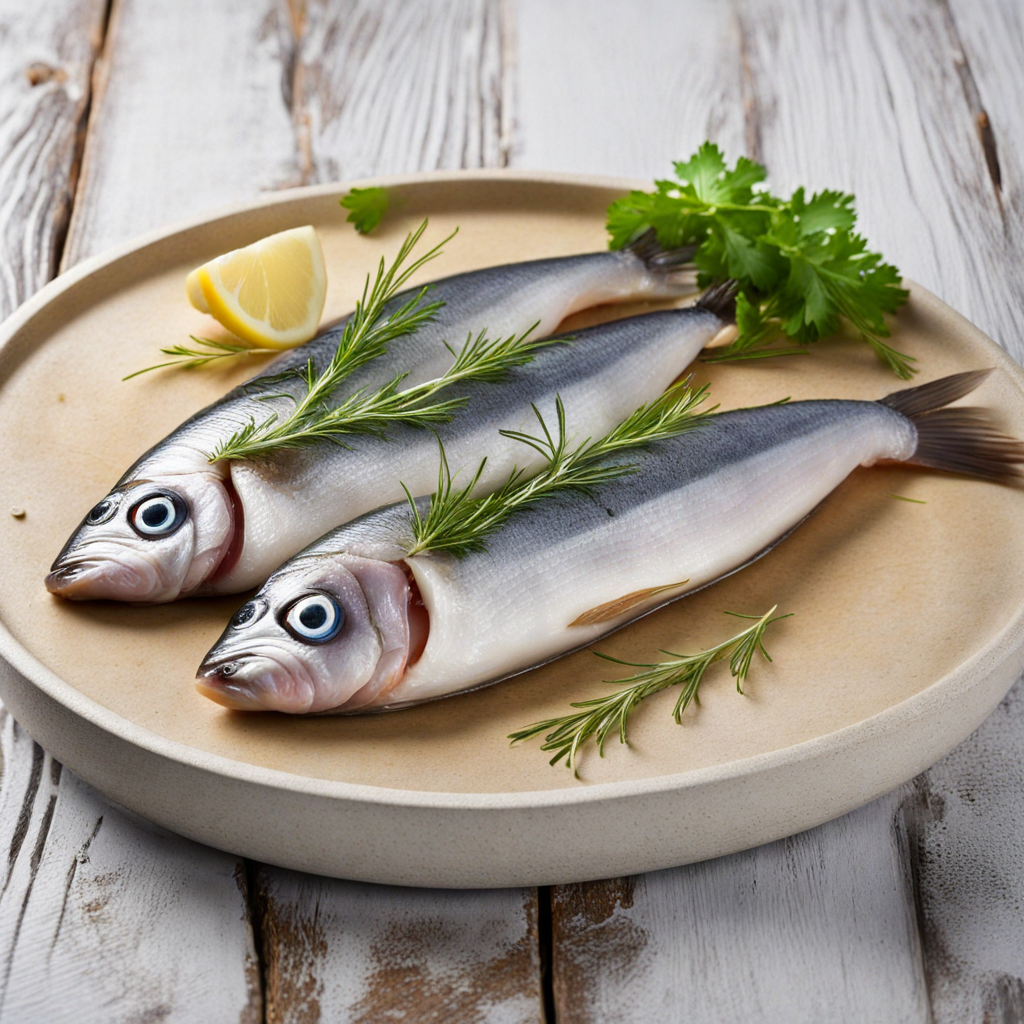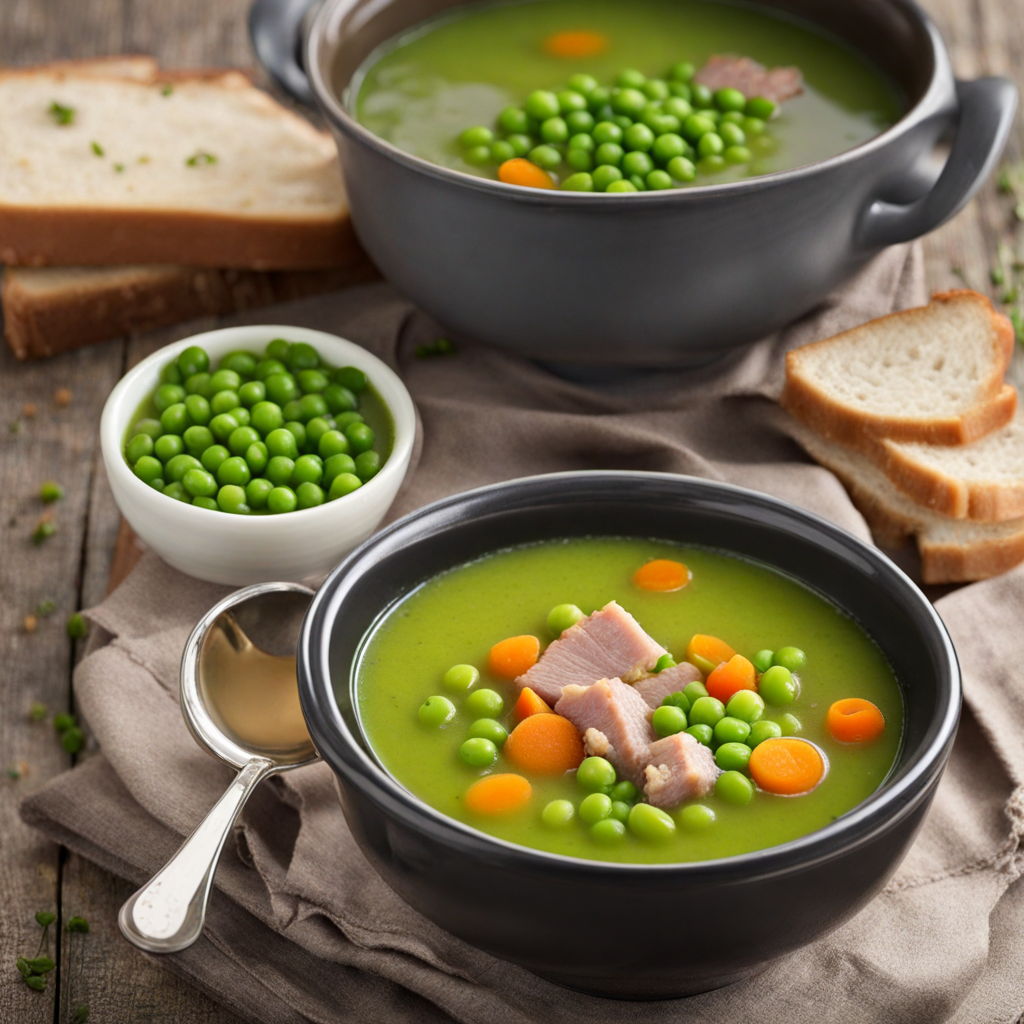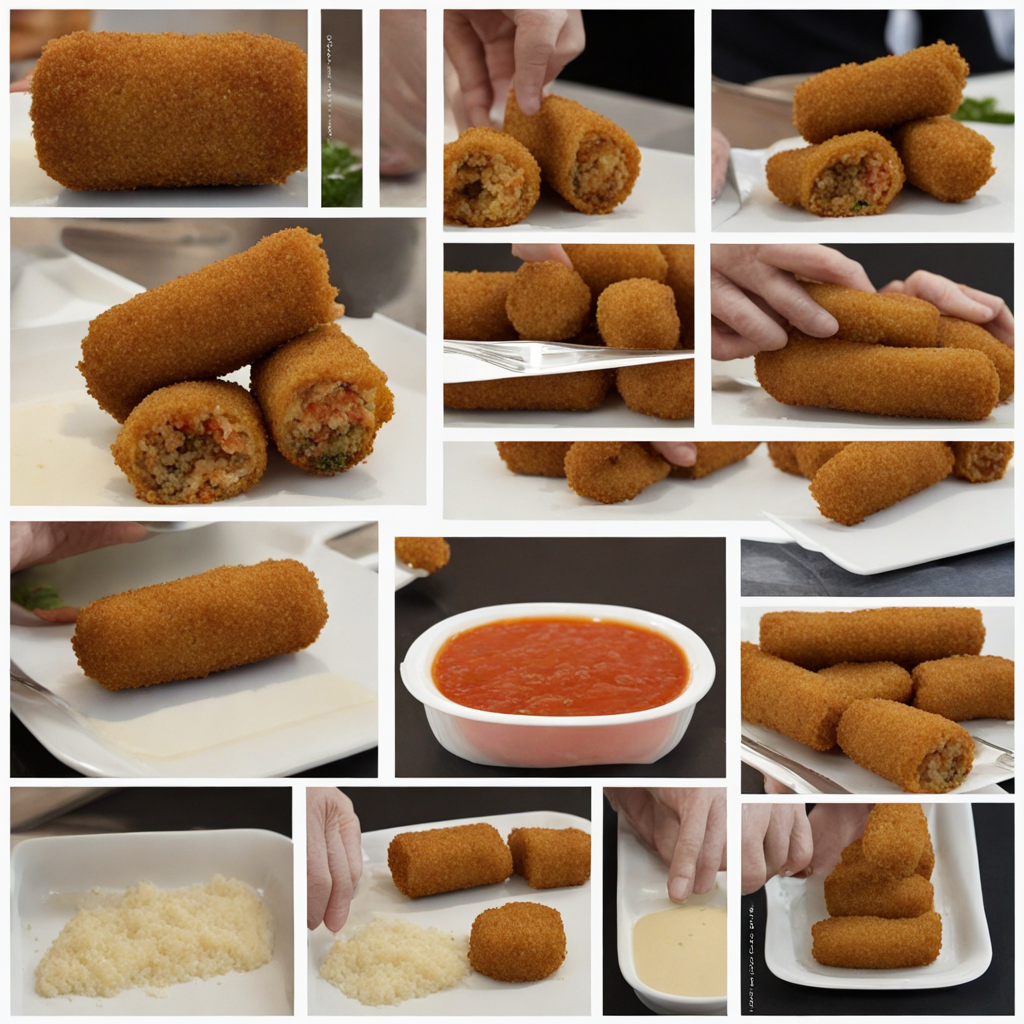Raw Herring
Raw herring, or 'haring' as it's known in Dutch, is a traditional delicacy that captures the essence of the Netherlands' rich maritime culture. This unique dish features fresh, high-quality herring fish, typically caught in the North Sea during the summer months. The fish is prepared by simply gutting and cleaning it, leaving the flesh untouched to maintain its delicate texture and flavor. A hallmark of raw herring is its mild, slightly briny taste, which is both refreshing and subtly sweet, making it an intriguing experience for those unaccustomed to eating fish in such a raw form. To enjoy raw herring to its fullest, it is often served with finely chopped onions and gherkins, which add a delightful crunch and tanginess that perfectly complements the fish's natural taste. The combination of the soft, silky fish with the crisp vegetables creates a harmonious balance of flavors. Many locals indulge in this dish by holding the herring by the tail and taking a bite, showcasing the casual and communal nature of Dutch food culture. It’s a must-try for adventurous eaters looking to explore authentic Dutch cuisine. In addition to its taste, raw herring also carries cultural significance in the Netherlands, often enjoyed during festivals and summer fairs. The ritual of eating herring, whether at a market stall or a seaside café, is a cherished experience that connects people to their culinary heritage. This dish not only offers a new taste sensation but also invites you to partake in a time-honored tradition that highlights the Netherlands' love for fresh seafood, making it a delightful and memorable addition to any food lover's journey.
How It Became This Dish
Haring: A Culinary Treasure of the Netherlands Haring, or herring, is more than just a fish in the Netherlands; it is a cultural icon steeped in history, tradition, and social significance. This small, oily fish has played an essential role in Dutch cuisine and economy for centuries, evolving from a simple sustenance food to a celebrated delicacy that captures the essence of Dutch maritime culture. This exploration of herring will cover its origins, cultural significance, and development through time. Origins of Haring The herring fish, primarily found in the North Atlantic and North Sea, has been a vital food source for coastal communities since ancient times. Archaeological evidence suggests that herring fishing dates back to prehistoric times, with the fish appearing in the diets of early inhabitants of the region. The Netherlands, with its extensive coastline and rich fishing grounds, soon became a hub for herring fishing. During the Middle Ages, herring became a staple in the diet of the burgeoning population in northern Europe. The fish's high fat content made it an excellent source of energy, especially for the working class. Herring was so plentiful that it was often preserved through salting and pickling, allowing it to be stored and transported over long distances. The preservation process not only extended the fish's shelf life but also transcended regional culinary boundaries, leading to its widespread popularity. The Development of Haring Traditions The 14th and 15th centuries marked a turning point for herring fishing in the Netherlands, coinciding with the rise of the Dutch fishing industry. The development of the "Dutch method" of herring curing, which involved brining the fish and then packing it in barrels, allowed for mass production and export. This innovation transformed the herring industry, making the Netherlands a dominant player in European fisheries. The early modern period was characterized by the establishment of the herring trade as a significant economic driver for the Dutch economy. The annual arrival of the new herring catch, known as the "Nieuwe Haring" (new herring), became a much-anticipated event. Traditionally, this catch begins in May or June when the herring has reached its optimal fat content before spawning. It was celebrated with festivals and fairs, where locals and tourists alike would gather to enjoy the freshly caught fish. This event not only highlighted the importance of herring to the Dutch economy but also fostered a sense of community and cultural identity. Cultural Significance of Haring Haring is deeply embedded in Dutch culture and tradition. The act of eating herring has evolved into a social ritual, often marked by specific customs. One of the most recognizable ways to enjoy herring is to eat it raw, typically served with onions and pickles. To eat herring in the traditional manner, one often holds the fish by the tail and takes a bite directly from it, a practice that emphasizes the freshness of the catch. This method not only highlights the simplicity of the dish but also creates a communal experience, as friends and family gather to share in the enjoyment. Another cultural aspect of herring is its association with festivals and celebrations. The arrival of the first barrel of Nieuwe Haring is celebrated with much fanfare, including ceremonial tastings by local officials and the public. The herring season culminates in the "Haringparty," where food stalls offer various herring preparations, showcasing the fish's versatility. This celebration encapsulates the spirit of Dutch summer and the rich maritime heritage of the nation. Herring is also an essential component of Dutch culinary history, influencing regional dishes and flavors. From herring salads to herring stew, the fish has inspired countless recipes, showcasing its adaptability and significance in Dutch households. Various regional variations exist, with each area adding its unique twist to this beloved fish. For instance, in the coastal town of Scheveningen, herring is often served with a generous dollop of mustard, while in Amsterdam, it might be accompanied by a tangy apple salad. Haring in Modern Times As the world has evolved, so too has the herring industry. The 20th century brought challenges, including overfishing and changing consumer preferences. The Dutch fishing industry had to adapt to these challenges, leading to a focus on sustainability and responsible fishing practices. Today, many herring producers are committed to eco-friendly practices, ensuring that this essential fish remains a viable resource for future generations. In contemporary Dutch cuisine, herring continues to hold a prominent place. While traditional methods of preparation remain popular, chefs are increasingly experimenting with innovative approaches to herring. Modern culinary techniques, such as smoking and marinating, have added new dimensions to the fish, appealing to a broader audience. Herring has also found its way into gourmet restaurants, where it is often featured in creative dishes that highlight its unique flavor. The rise of global food culture has also introduced herring to international palates. As Dutch expatriates and culinary enthusiasts around the world seek out traditional foods, herring has gained recognition beyond the Netherlands. Whether enjoyed in its classic form or reimagined in contemporary dishes, herring has become a symbol of Dutch culinary heritage that resonates with people worldwide. Conclusion The history of herring in the Netherlands is a testament to the enduring relationship between food, culture, and community. From its humble beginnings as a staple food for coastal communities to its status as a cherished delicacy, herring has woven itself into the fabric of Dutch life. Its cultural significance is evident in the traditions, festivals, and culinary innovations that continue to celebrate this remarkable fish. As we look to the future, the story of herring serves as a reminder of the importance of sustainability and the need to honor the traditional practices that have sustained generations. Whether enjoyed at a summer festival, in a cozy café, or served with a modern twist in a fine dining restaurant, herring will undoubtedly continue to be a beloved symbol of the Netherlands for years to come.
You may like
Discover local flavors from Netherlands







